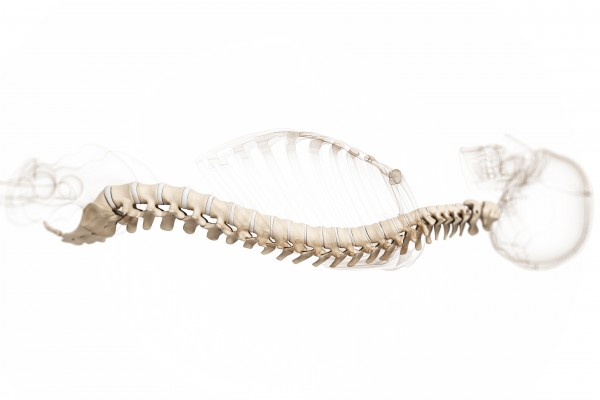Get To Know Your Discs
Posted May 17, 2021 at 17:45
Posted May 17, 2021 at 17:45

�Slipped disc�, bulging disc, degenerated disc- the famous or infamous disc is something that most of our clients experienced, heard of or read about.
Since there is so much attention on the intervertebral disc, let�s have a closer look at its anatomy.
Intervertebral disc is a structure that separates the vertebral bodies of the spine and it plays a crucial role in shock absorption. It is made mainly of fibrocartilage and in total we have twenty three of these soft tissue structures located within the human vertebral column.
The disc has principally two layers: the soft inner layer which comprises a water based gelatinuous mass known as nucleus pulpous, and the hard outer layer made of tough fibrous shell, known as annulus fibrous and ring like layers called lamellae that help to increase the shock absorbing ability of the disc.
Intervertebral discs are made up of cells composed of protein aggrecan. Within these cells are tiny sponges which are considered to be able to carry approximately 500 times their own weight of water. Over time however these cells naturally die and the content of water in the disc reduces. This process will eventually lead to a condition called degenerative disc disease.
A disc is kept alive by the connection to the vertebral body through vertebral end plates and like any other tissue needs nutrients and oxygen to stay healthy.
Nerve roots exit the spinal canal through small passageways between the vertebrae and the disc. When the inner fluid from a damaged disc pushes into the spinal canal or the nerve roots as they exit within the vertebral foramen (an opening for the nerve roots to exit) pain and other symptoms can occur. This is then commonly referred to as a herniated intervertebral disc or prolapsed intervertebral disc.
The annulus fibrosus- the outer layer of the disc is thinner at the back (posteriorly) and therefore is more susceptible to injury.
Disc degeneration and loss of its elasticity is a natural process. Keeping your spine in top condition with regular adjustments and soft tissue work that will ensure you are distributing your weight evenly throughout and all the muscles are firing as designed in everyday tasks, sports and activities will help your disc stay healthier for longer. Also optimal oxygen levels, good diet and collagen supplements will help keep the disc happy.
If you would like to know more about the health of your spine, speak to our clinicians or book initial consultation if you haven't visited us yet.